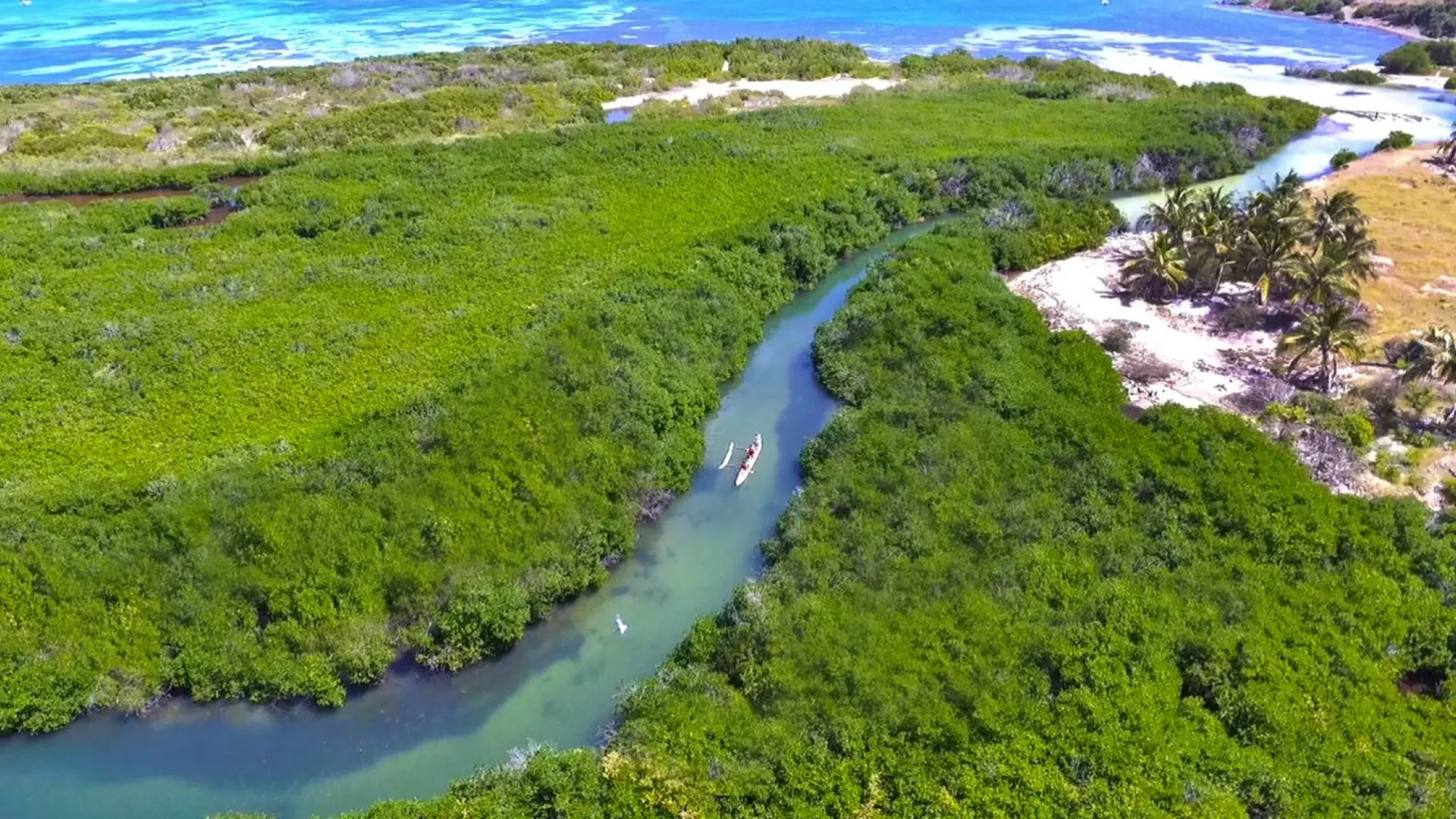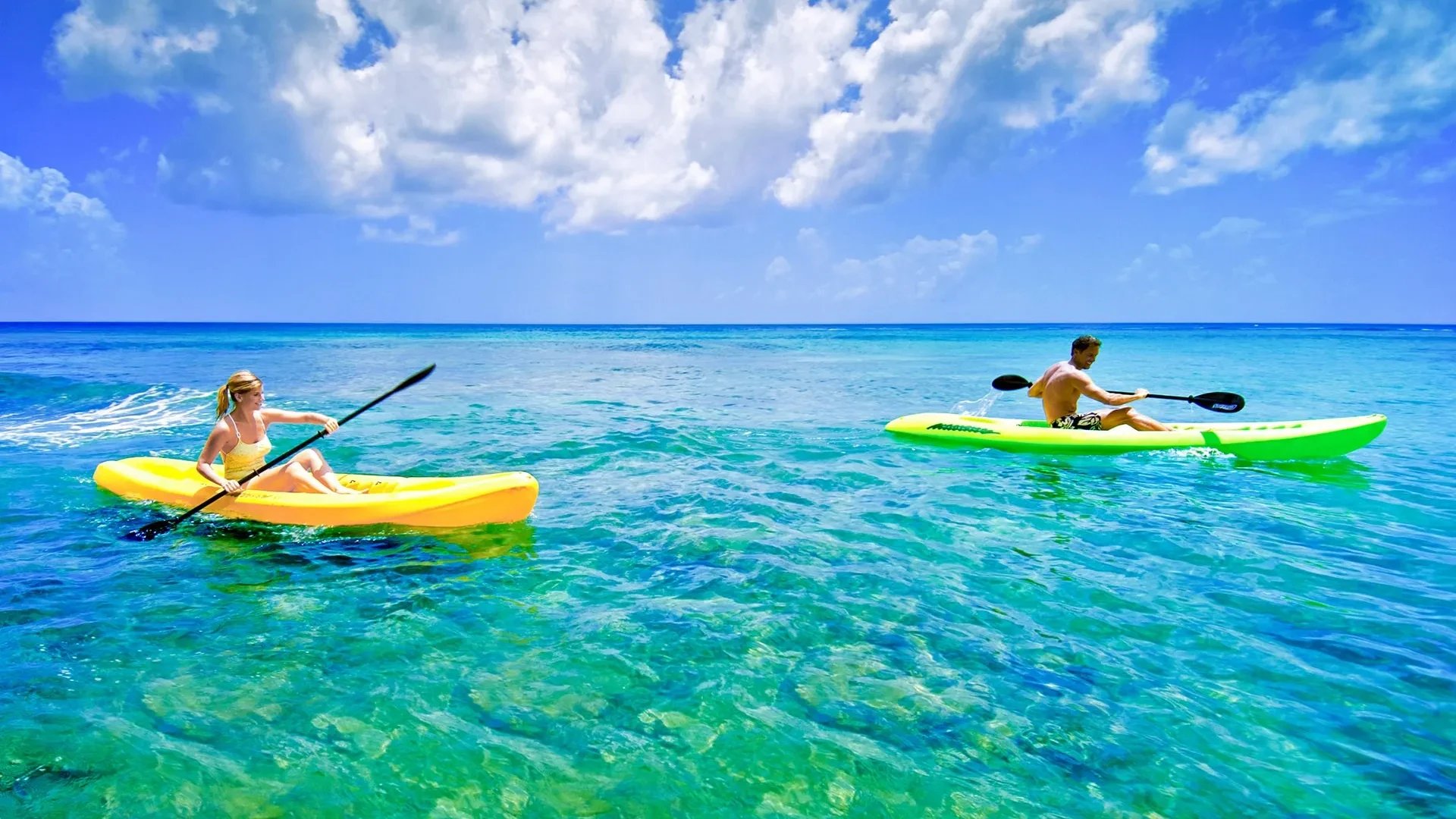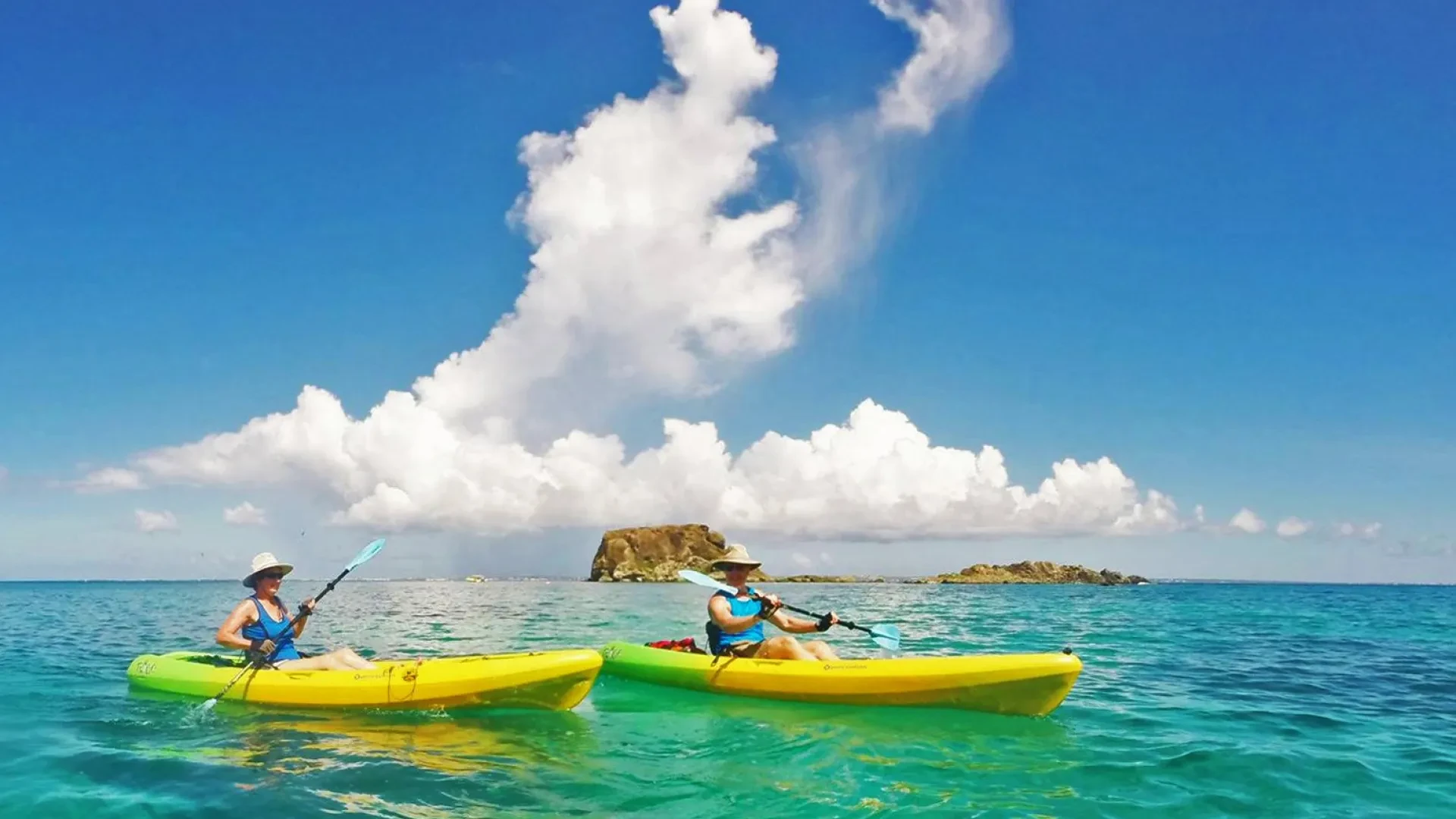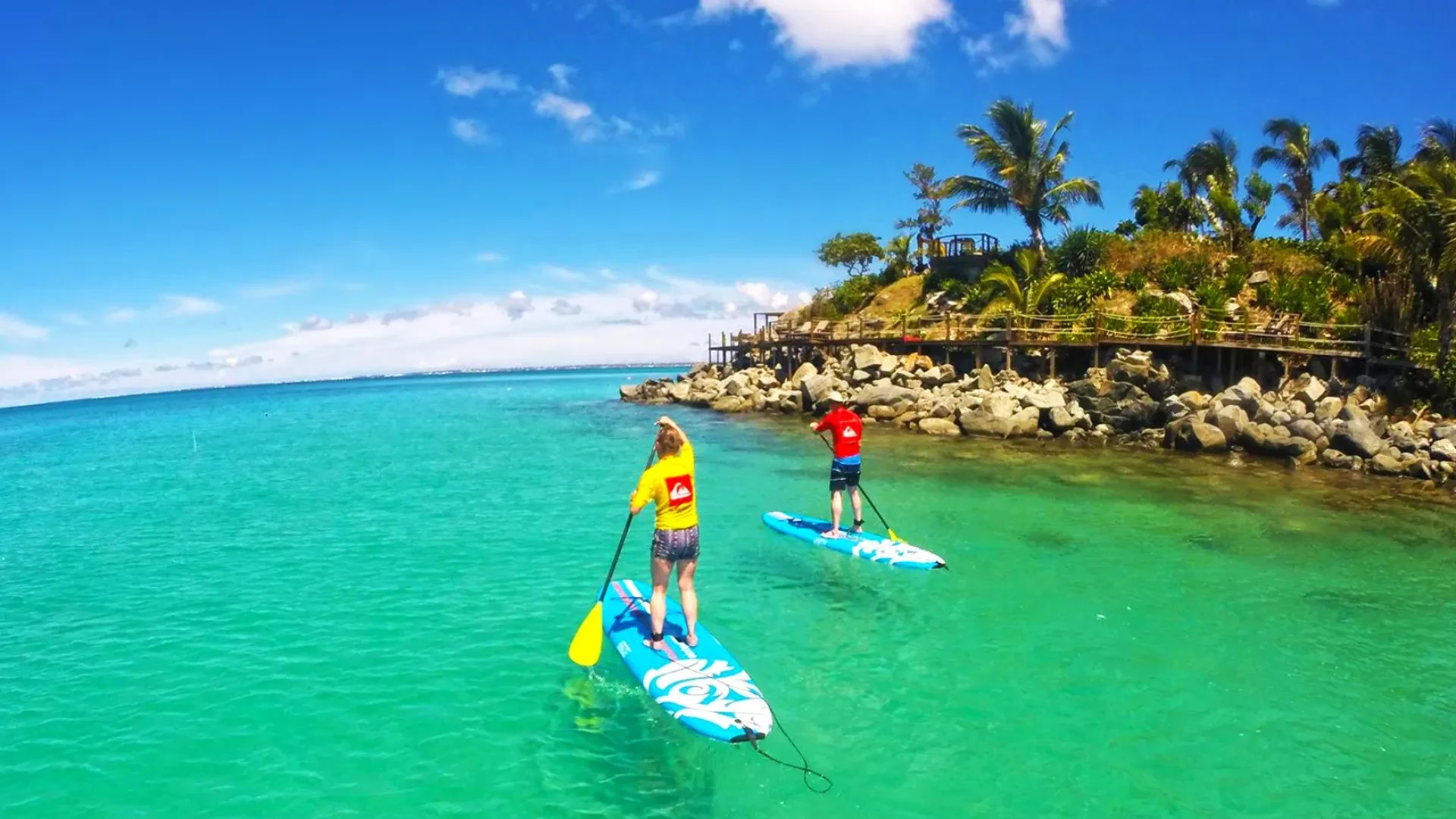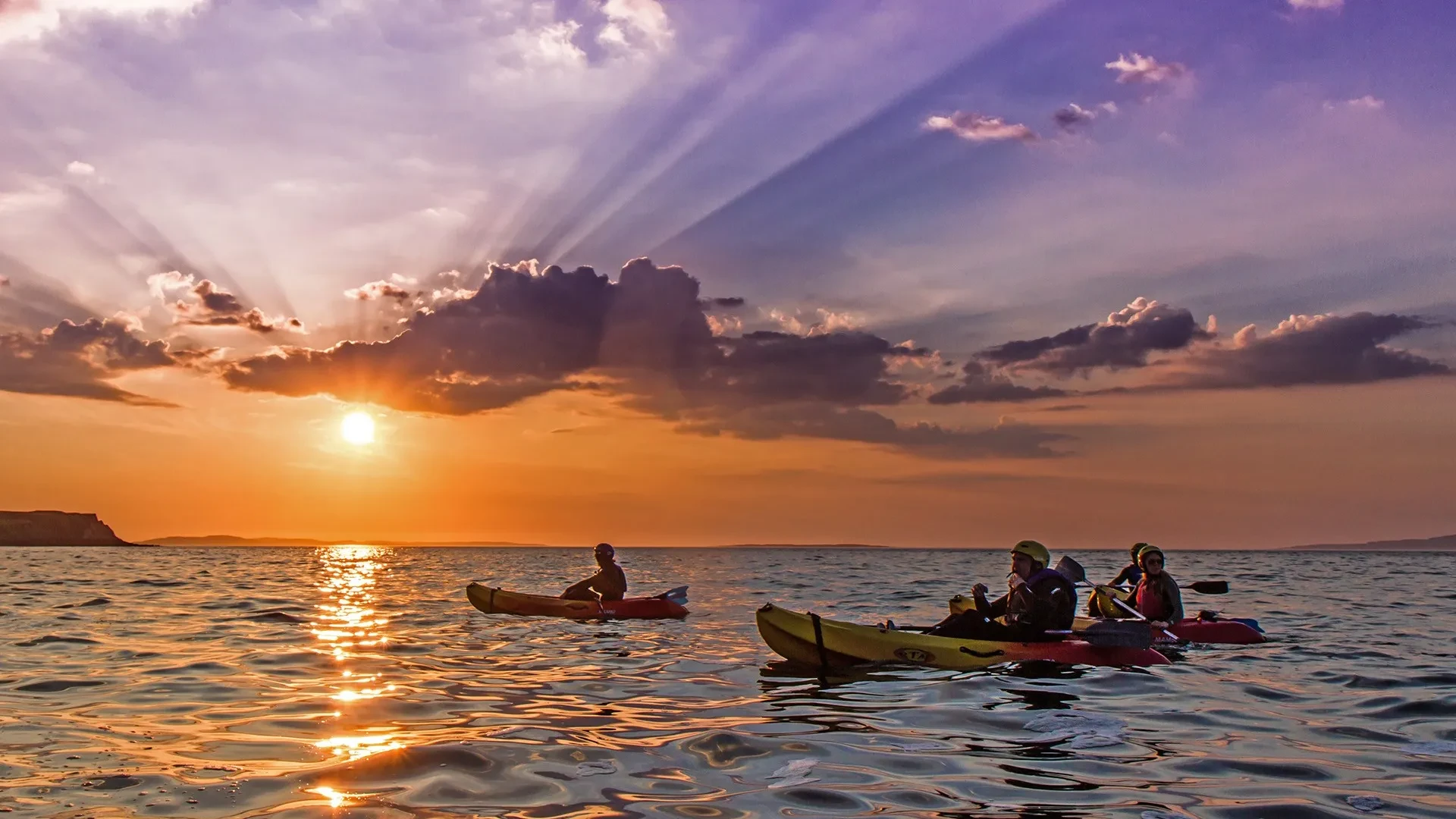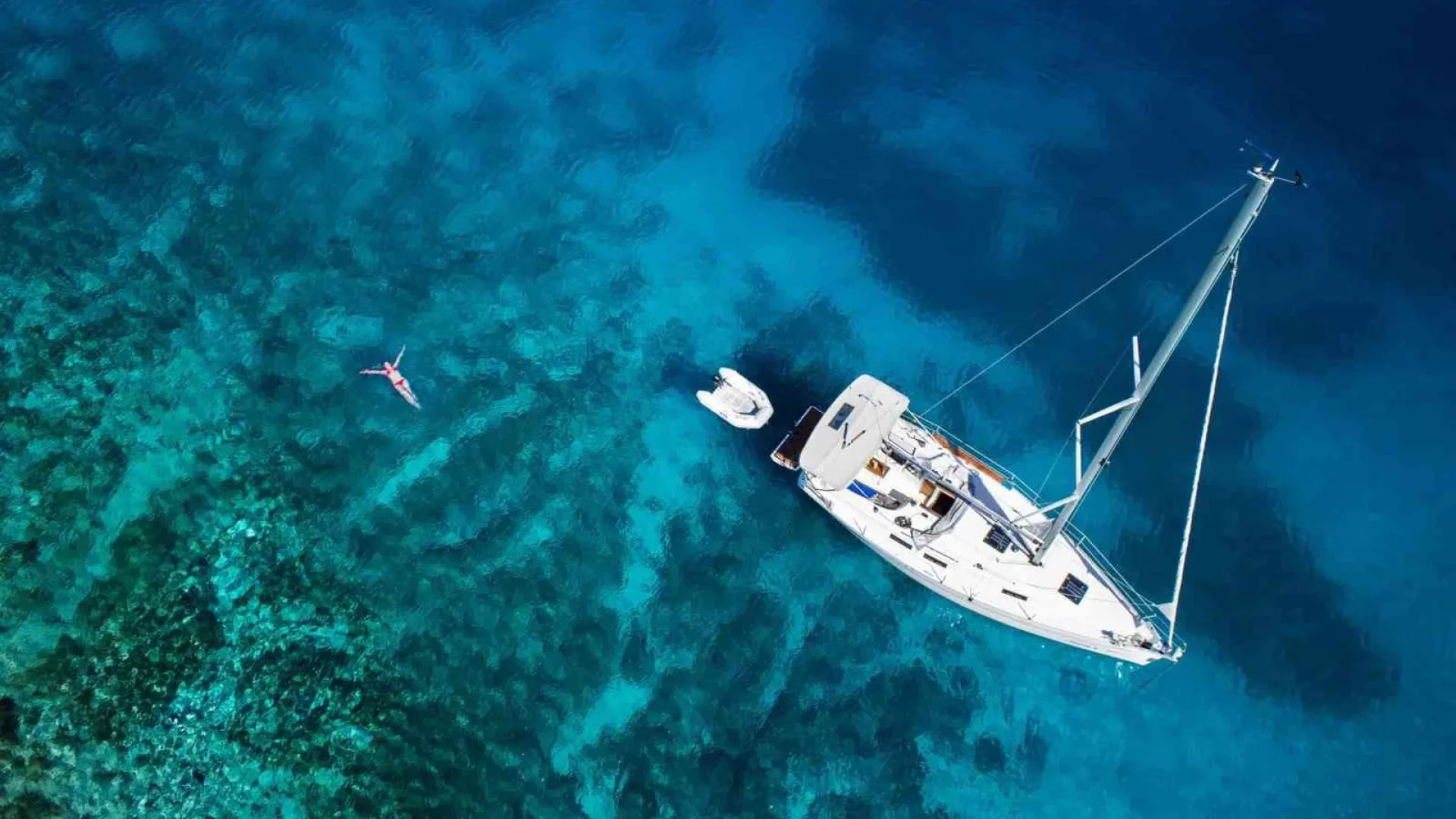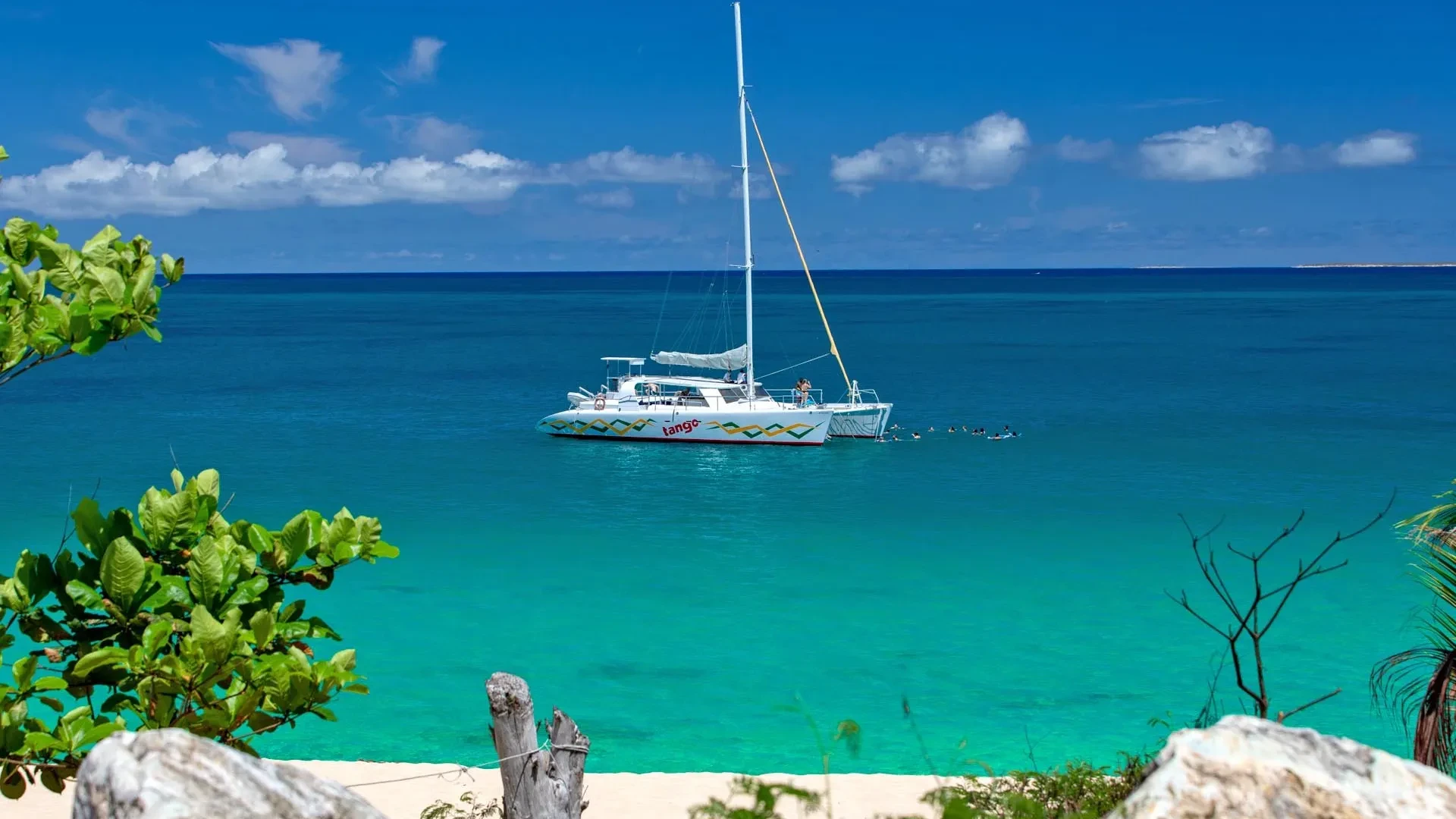Levente
September 23.
Been there. Done that.
Been there. Done that.
September 23.
St. Maarten’s wildlife thrives across reefs, lagoons, and hilltop forests. From nesting turtles to rare seabirds, here are the signature animals to look for in 2025.
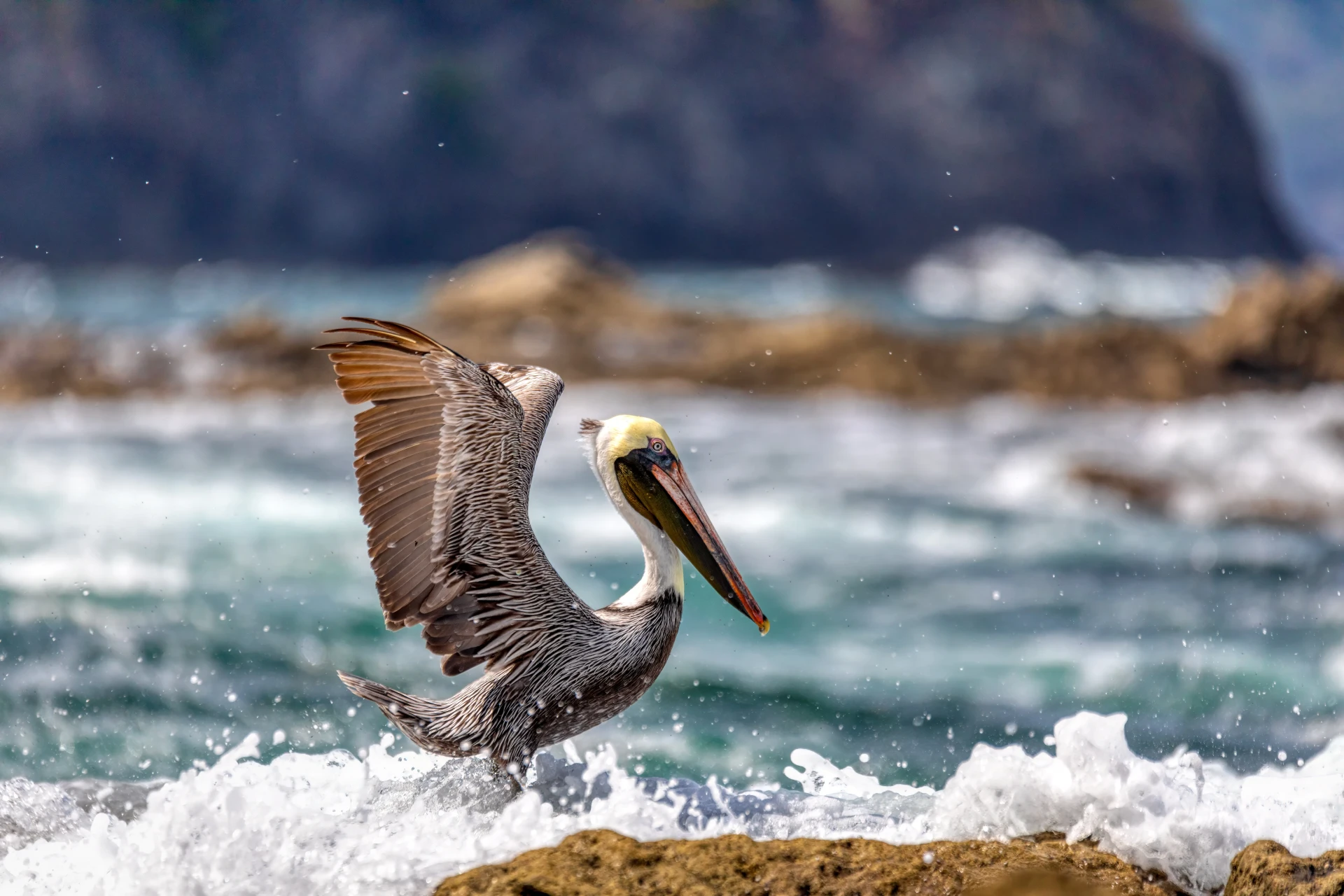
St. Maarten's national bird is the brown pelican. These coastal icons are hard to miss — gliding low over the water or plunging headfirst to catch fish. St. Maarten’s largest breeding colony is at Fort Amsterdam, where pelicans nest on the cliffs and soar over Little Bay. Visit in the early morning for the most action.
Common across the island, green iguanas can grow over a meter long and turn bright orange in mating season. You’ll find them sunbathing on seawalls, climbing trees near ponds, or even wandering resort gardens. Despite their prehistoric look, they’re peaceful, plant-eating reptiles.
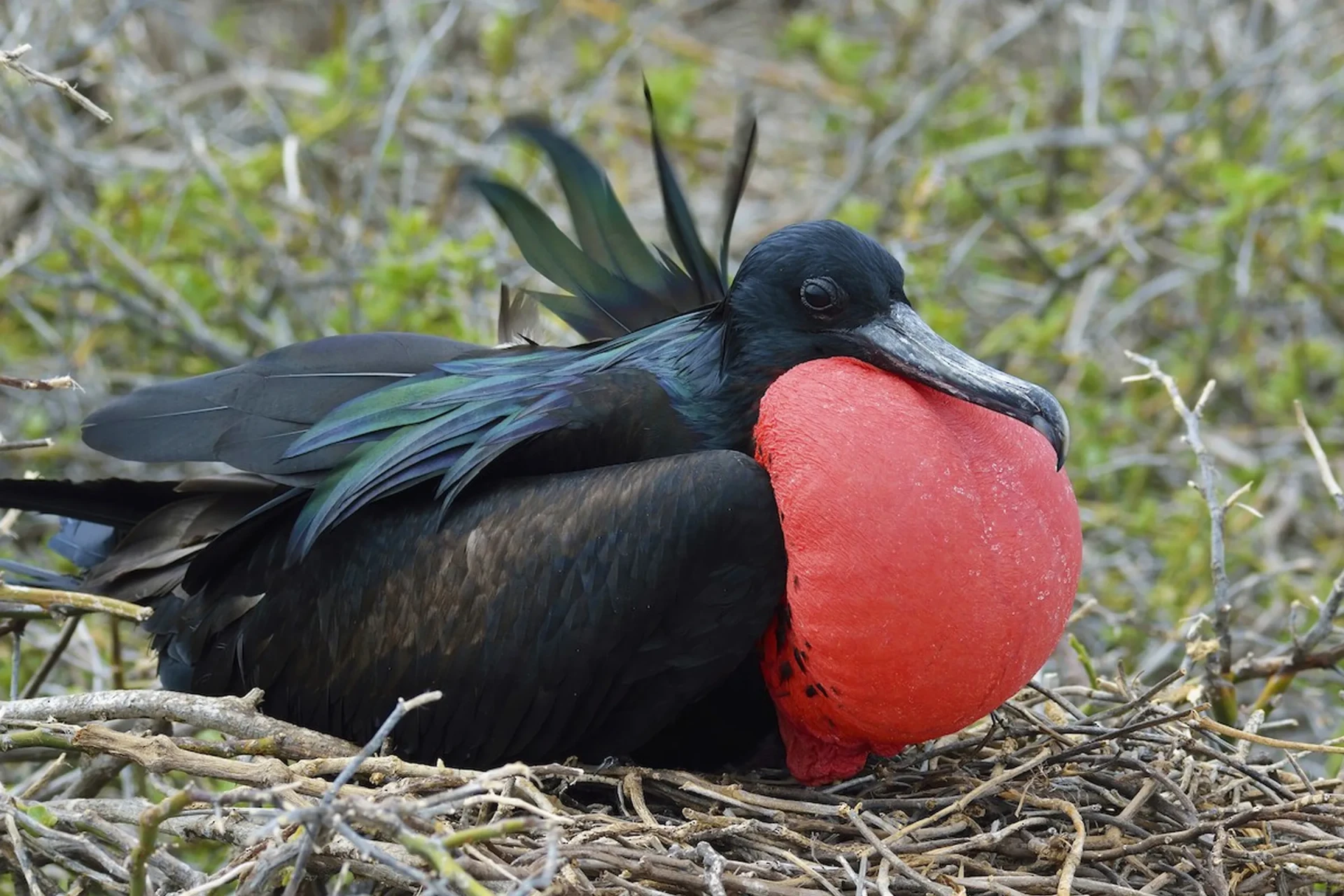
With their massive wingspans and forked tails, frigatebirds patrol the skies above both the Dutch and French coasts. Males inflate bright red throat pouches during courtship. Look for them soaring above Pelikan Rock or Fort Amsterdam on breezy afternoons.
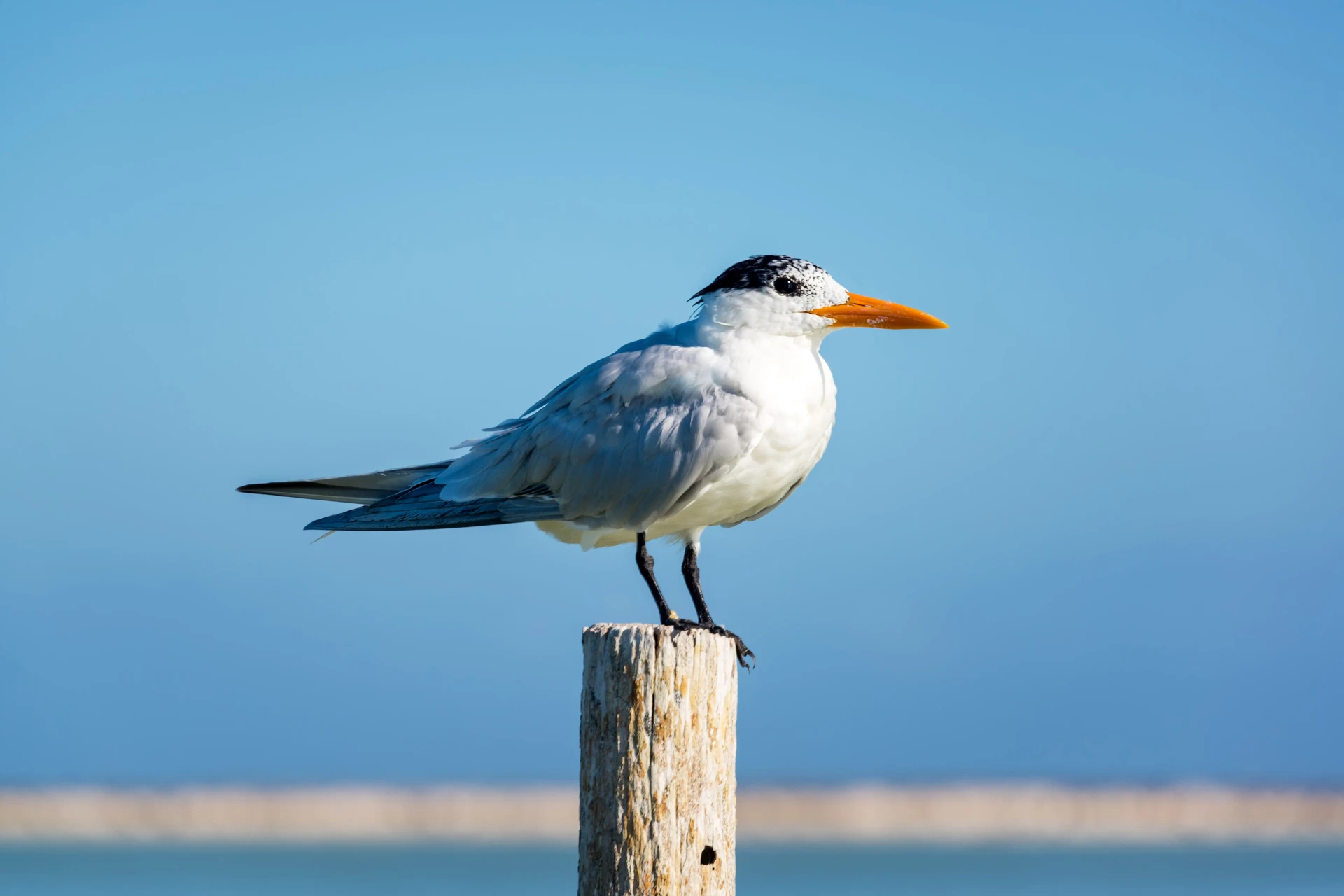
This sleek seabird, with its black cap and orange bill, nests in colonies on offshore rocks and sandy islets. Watch them dive headfirst for fish or rest in groups along quiet beaches. Pelikan Rock is one of the best spots to see them in breeding season (late spring to summer).

The snowy egret (Egretta thula) is a graceful white heron known for its slender black legs, bright yellow feet, and delicate plumes. Found in wetlands and coastal areas, it hunts small fish and crustaceans by swiftly darting through shallow water.

An introduced species, vervet monkeys are now part of St. Maarten’s landscape. They’re intelligent, curious, and often spotted in small troops near Pic Paradis and Loterie Farm. While they’re fun to watch, it’s important not to feed them — it can harm their health and disrupt natural behavior.

A striking wading bird with a chunky build and bold markings, the yellow-crowned night heron is a mangrove and lagoon specialist. It hunts crabs in the shallows at dawn and dusk, especially around Mullet Pond and Little Key.
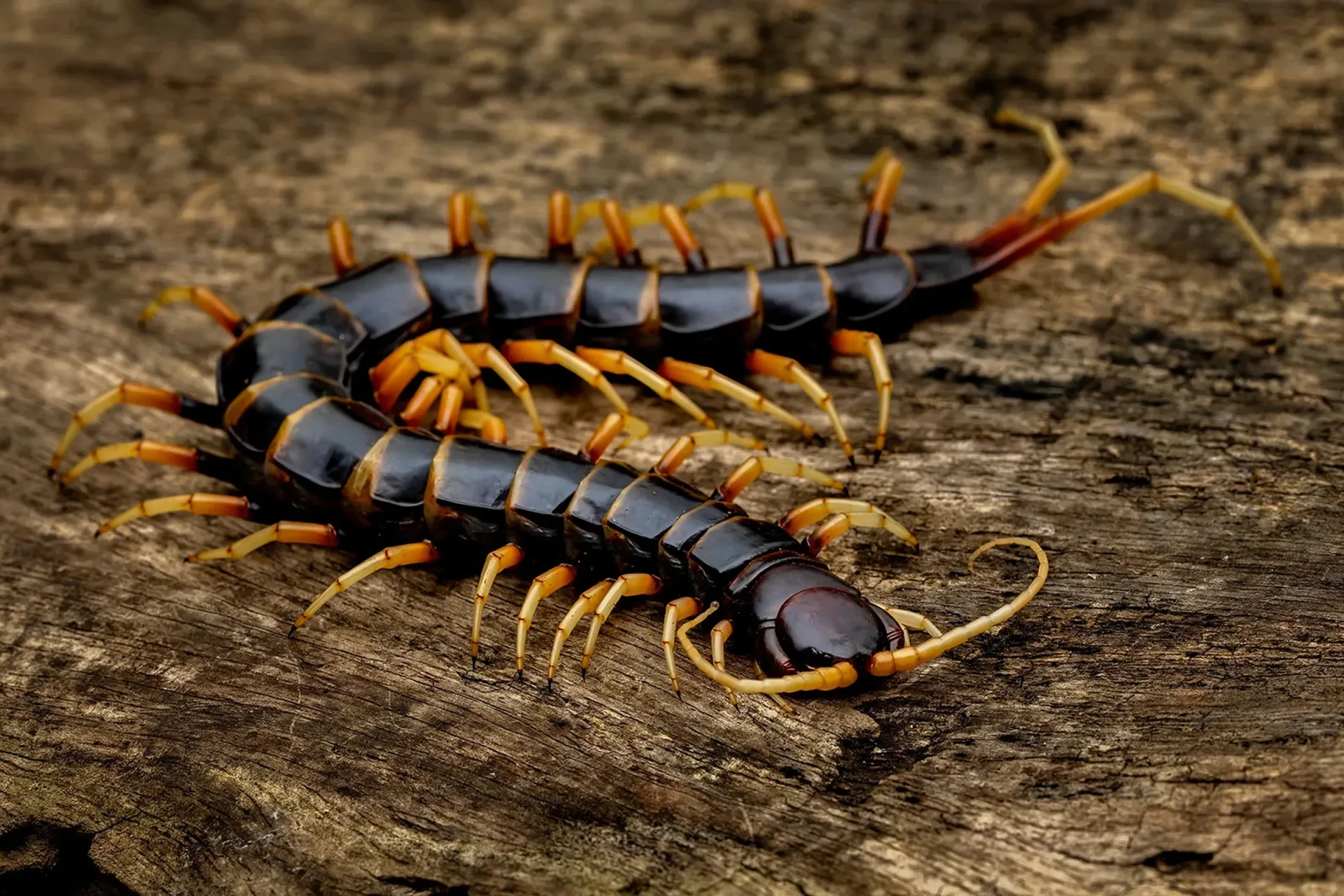
This large, fast-moving centipede can grow over 20 cm long and has a powerful bite. It’s usually found under rocks, fallen wood, or in caves. While its venom isn’t deadly, it can cause swelling and pain, so don’t touch it. Rare to see, but unforgettable if you do.

The Anguilla tree bank anole (Anolis gingivinus) is a small lizard found across the Leeward islands. Olive to brown in color, it blends easily into trees and bushes. Active by day, this agile anole helps control local insect populations.

A regular sight for divers and snorkelers, the hawksbill turtle feeds in seagrass beds and along coral reefs. With its patterned shell and sharp beak, it’s one of the Caribbean’s most photogenic marine reptiles. You’re most likely to see them at Man of War Shoal, Creole Rock, and Tintamarre, especially from April to December during nesting season.

Graceful and unmistakable, spotted eagle rays glide over sandy bottoms and reef edges, often in pairs or small groups. They’re most often seen while diving or snorkeling at Tintamarre and Man of War Shoal. Early-morning boat trips give the best chance of a sighting.

During their winter migration, humpback whales pass offshore between January and March. Boat tours in this season sometimes spot them breaching or slapping their tails — an unforgettable sight against the island’s backdrop.

Playful and fast-moving, bottlenose dolphins are seen year-round in St. Maarten’s waters, sometimes riding boat wakes or hunting fish along the coast. They’re most often spotted on calm days during boat trips around the island or between the Dutch and French sides.

Caribbean reef sharks are often encountered during scuba diving in St. Maarten. They are pretty much harmless and pose no risk to humans. There have been only a very few shark attacks in St. Maarten and none of them was related to Caribbean reef sharks.

Pic Paradis (Paradise Peak) is the highest point on St. Maarten, with shaded forest trails where you can spot hummingbirds, pearly-eyed thrashers, lizards, and even vervet monkeys. It's also good for spotting raptors and migratory birds on clear days.

Easy beach entry with reef fish, octopus, and the Underwater Sculpture Park for a mix of art and marine life.

A shallow-water snorkeling haven within the Réserve Naturelle. Expect colorful reef fish, soft corals, and occasional turtle sightings.

Calm, clear shallows perfect for beginners, with seagrass beds where you might spot rays and juvenile fish.

Known for its turtle encounters in the seagrass meadows just offshore. Also a good spot for rays and occasional dolphins cruising past.
Maho Beach, Mullet Bay, and certain stretches near Simpson Bay Lagoon during April–December.
Offshore between January–March for humpbacks, year-round for dolphins.
Close to Philipsburg, this wetland is a stopover for migratory waterbirds like pintails and black-necked stilts.
A quieter birding location where you might spot sandpipers and herons without the crowds.
For a small island, St. Maarten squeezes in a surprising range of habitats. Its wildlife scene is spread across an impressive mix of marine parks, mangrove lagoons, and bird-rich headlands. Here's where all nature lovers should go in 2025:
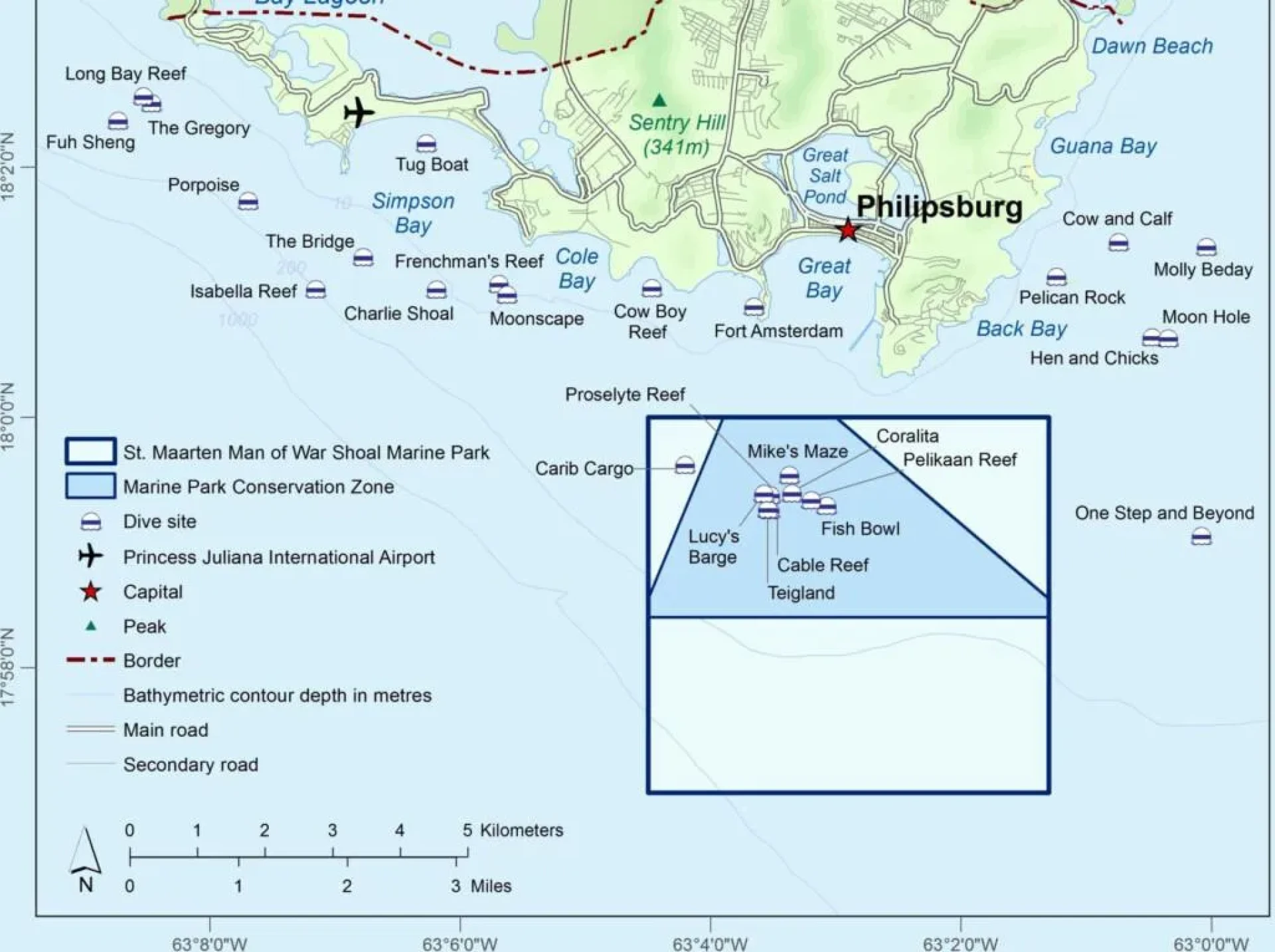
31 km² of coral reef, seagrass beds, and open water. Expect reef sharks, turtles, and colorful reef fish. Access is only by boat with licensed operators, and fishing is banned.
Wildlife species to spot: Caribbean reef shark, hawksbill turtle, southern stingray, blue tang.
Best time to visit: Best in the morning for calmer seas and better visibility.
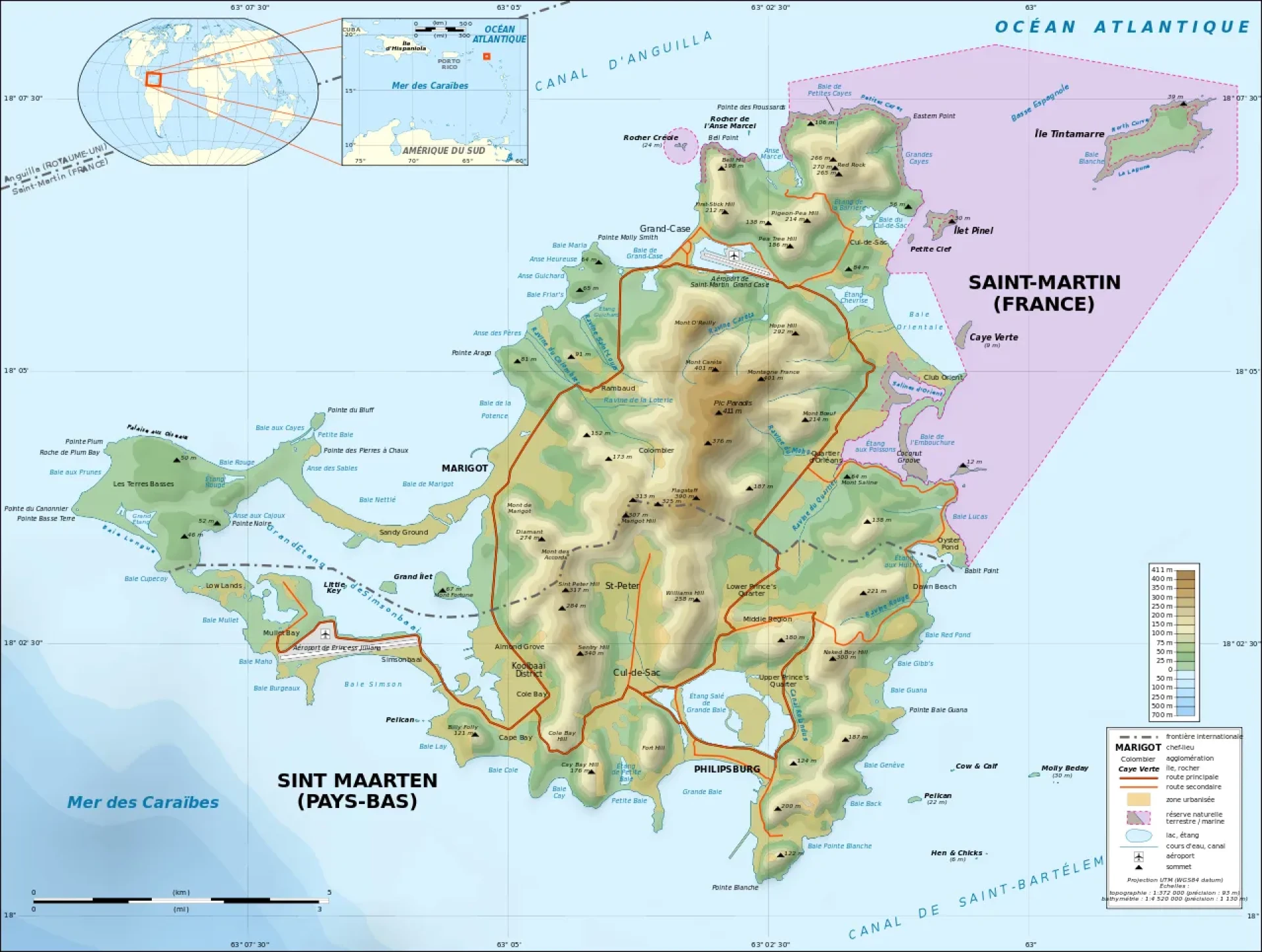
The Reserve Naturelle St. Martin protects several key islets and reefs, including Creole Rock and Tintamarre. Strict no-landing zones help protect seabird nests and turtle feeding grounds.
Wildlife species to spot: Green turtle, spotted eagle ray, brown noddy, sooty tern.
Best time to visit: Mid-morning on clear days for snorkeling; late spring to summer for active seabird colonies.

A designated Ramsar wetland and part of Simpson Bay Lagoon. Mangrove roots shelter juvenile fish, rays, and small sharks while hosting herons, egrets, and pelicans overhead.
Wildlife species to spot: Juvenile snapper, juvenile barracuda, small lemon shark, brown pelican, great egret.
Best time to visit: Early morning when bird activity is highest and the water is glassy for photography.

An uninhabited mangrove island in the lagoon that’s in the process of becoming a formal nature park.
Wildlife species to spot: Juvenile parrotfish, mojarra, snowy egret, yellow-crowned night heron.
Best time to visit: Morning or late afternoon by kayak for the best light and cooler temperatures.

Easy access from Philipsburg; home to a breeding colony of brown pelicans visible from the headland trails.
Wildlife species to spot: Brown pelican, magnificent frigatebird, laughing gull.
Best time to visit: Early morning or late afternoon for active pelicans and softer light.

Offshore seabird nesting site (access by boat; no landings allowed).
Wildlife species to spot: Masked booby, royal tern, brown noddy.
Best time to visit: Late spring through summer for peak nesting activity; mornings for calmer seas.

A brackish pond attracting ducks, coots, and herons, just minutes from town.
Wildlife species to spot: Blue-winged teal, common moorhen, black-necked stilt, great egret.
Best time to visit: Early morning for the most bird activity and minimal human disturbance.
Great Salt Pond, Fresh Pond, and Little Bay Pond are hotspots for ducks, coots, and other wetland birds, especially during migration periods.
Wildlife species to spot: Blue-winged teal, black-necked stilt, common moorhen, snowy egret.
Best time to visit: Early morning or late afternoon for feeding activity.
Pic Paradis and Loterie Farm offer shaded paths through dry forest, with views over both sides of the island. Great for spotting land birds and reptiles.
Wildlife species to spot: Antillean crested hummingbird, pearly-eyed thrasher, tree frog, green iguana.
Best time to visit: Early morning for bird activity and cooler hiking temperatures.
Wildlife encounters in St. Maarten are often close and memorable — but a few simple habits will keep them safe and your experience positive.
Wildlife is active year-round in St. Maarten, but certain seasons bring standout moments.
St. Maarten’s wild side is easy to explore solo, but guided tours and smart tools can help you see more and understand what you’re looking at. Whether you’re birdwatching, snorkeling, or hiking, these options make wildlife spotting easier and more rewarding.
St. Maarten is home to several dedicated conservation groups and programs:
Supporting these groups — by joining eco-friendly tours, following guidelines, and donating where possible — helps keep St. Maarten’s wildlife thriving for generations to come.
Yes. The island has an introduced population of vervet (green) monkeys, mostly around Pic Paradis and Loterie Farm. They are not native, and feeding them is discouraged to protect their health and local ecosystems. They are not easy to spot. I lived in St. Maarten for almost 5 years but never saw them.
Yes. Caribbean reef sharks, nurse sharks, and occasionally larger species like tiger sharks are found in marine park waters. They are generally shy and pose no threat to respectful swimmers or divers.
Your best chances are while snorkeling or diving at Man of War Shoal, Creole Rock, and Tintamarre. From April to December, turtles also nest on certain beaches like Maho and Mullet Bay.
Late spring to summer is prime for seabird colonies at Pelikan Rock and Fort Amsterdam. November to March brings migratory waterbirds to ponds and wetlands.
There are no captive dolphin facilities. Wild bottlenose dolphins can be spotted year-round during boat trips, and humpback whales migrate past the island from January to March.

Creating this travel magazine takes an insane amount of time and money. If you’ve found it useful and would like to support me in helping other travelers like you, your donation would go a long way. Thanks, you’re the best!
